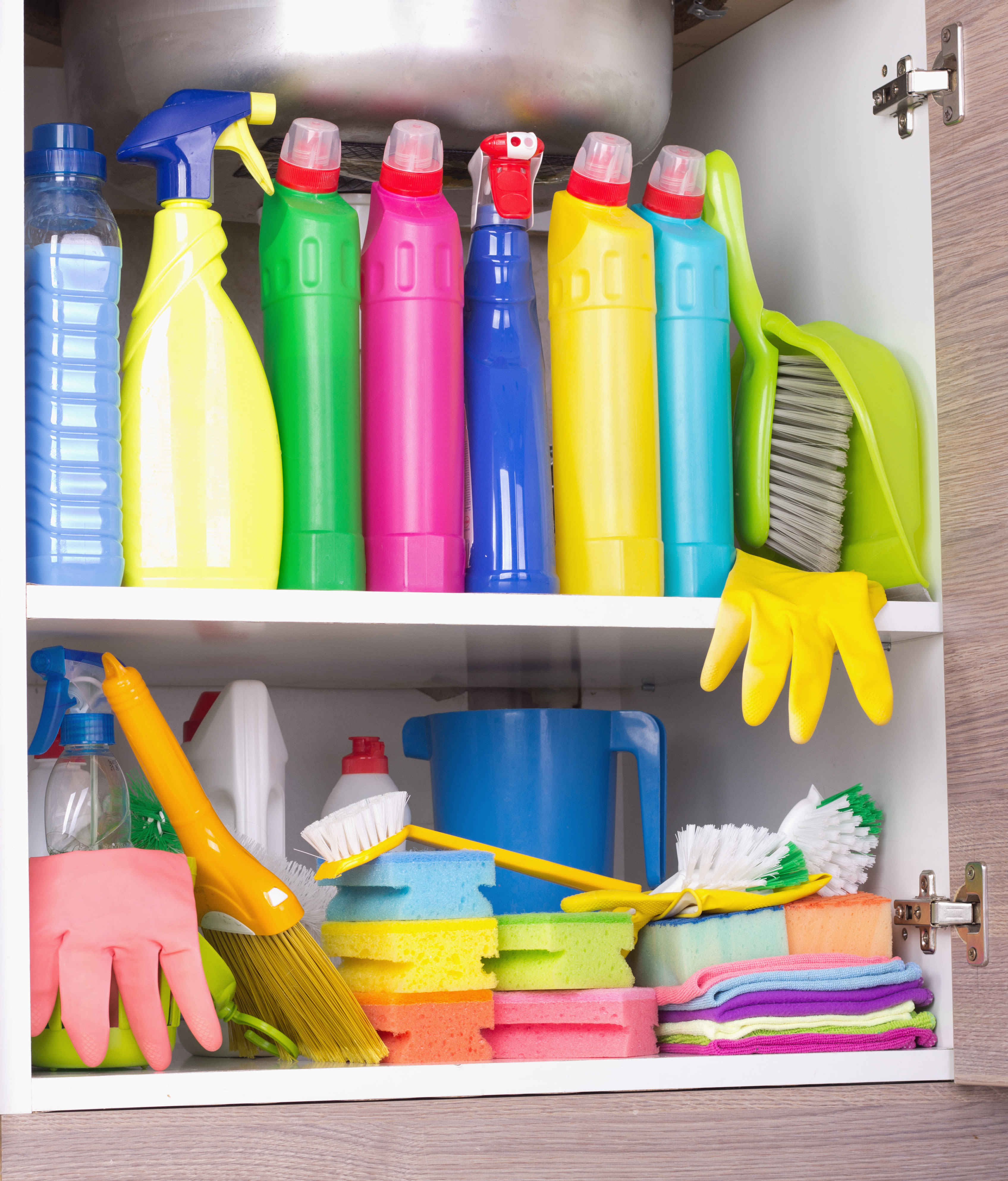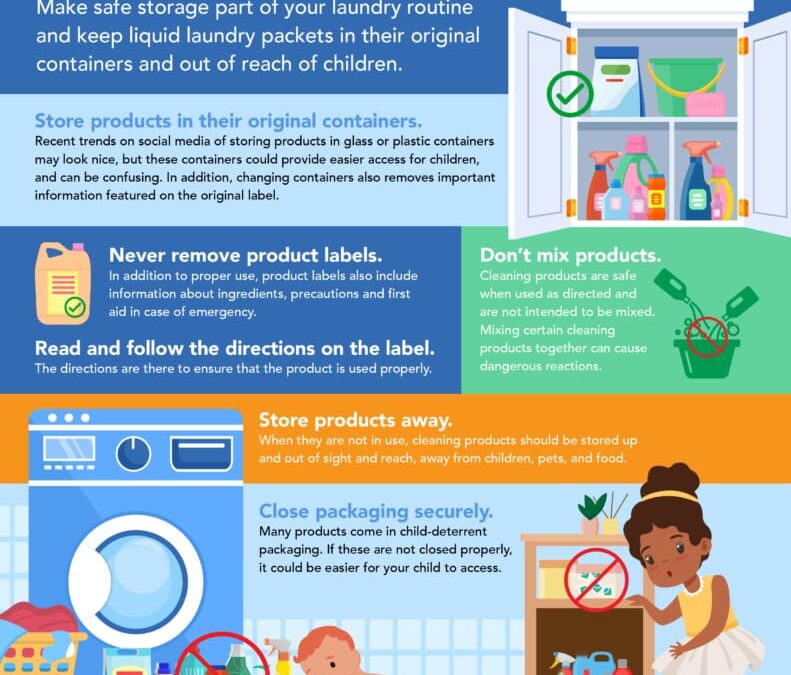Your kitchen is the heart of your home, where delicious meals are crafted and memories are made. But amidst the aroma of spices and the sound of sizzling pans, there’s a hidden challenge: where should you store your cleaning supplies?
It’s a decision that impacts not just the aesthetics of your space, but also the safety and efficiency of your kitchen routine. Imagine reaching for a cleaning cloth without knocking over a spice rack or finding the dish soap effortlessly when you need it most.
Storing cleaning supplies correctly can transform your kitchen into a more organized and stress-free environment. You’ll discover the best practices to keep your cleaning essentials neatly tucked away, yet easily accessible, ensuring your kitchen remains a sanctuary of cleanliness and order. Keep reading to unlock the secrets of optimal storage solutions that could revolutionize your daily kitchen experience.

Credit: alsco.com
Importance Of Safe Storage
Keeping cleaning supplies safe in the kitchen is crucial. Proper storage prevents accidents and keeps your family safe. Harmful chemicals should always be stored carefully. Let’s explore why safe storage is important.
Why Safe Storage Matters
Cleaning supplies can be dangerous if misused. Children and pets might access them if stored poorly. This can lead to serious health risks. Proper storage keeps these items out of reach. It also helps avoid spills and contamination.
Preventing Accidents
Accidental ingestion of cleaning products can be harmful. Safe storage minimizes these risks. Keep products in a secure cabinet or shelf. Use childproof locks on doors. This reduces the chance of accidental exposure.
Maintaining Product Effectiveness
Cleaning supplies need specific conditions to remain effective. Heat and moisture can degrade them. Store them in cool, dry areas. This keeps them working as intended. It also saves you money on replacements.
Organizing For Convenience
Safe storage helps in organizing supplies. An organized space makes cleaning easier. Group similar items together. Label shelves and containers. This helps you find items quickly. It also keeps the kitchen tidy and efficient.
Ideal Storage Locations
Choosing the right spot for your cleaning supplies in the kitchen can greatly influence efficiency and safety. You don’t want to fumble around looking for the right cleaner when a spill occurs. The best locations blend accessibility with practicality. Let’s explore some ideal storage solutions.
Kitchen Storage Solutions
Your kitchen cabinets are prime real estate for keeping cleaning supplies handy. Consider using a lower cabinet near the sink where most cleaning tasks begin. This location allows for easy access while washing dishes or wiping counters.
Install a pull-out drawer to maximize space and keep everything organized. If you have a small kitchen, use vertical storage solutions like wall-mounted shelves. They save space and keep supplies within arm’s reach.
Bathroom Storage Options
If your kitchen is compact, storing cleaning supplies in the bathroom can be a smart alternative. Look for under-sink space or a nearby linen closet. These spots can comfortably house detergents and sprays without cluttering your main kitchen area.
Utilize stackable bins or baskets to keep products organized. Ensure that the bathroom storage area is dry to prevent damage to your supplies. This way, you can easily grab what you need and return to the kitchen swiftly.
Garage And Utility Room Spaces
If you have a garage or utility room, consider using this space for bulkier cleaning supplies. Reserve a shelf or cabinet for items like mop buckets and large detergent bottles. This helps keep your kitchen free from clutter.
Label each shelf or bin clearly so you can find what you need quickly. You might find unexpected storage gems here, like hooks for hanging brooms or racks for stacking supplies. Is your garage or utility room underutilized? This could be the perfect solution.
Think about how often you use each cleaning product. Are you storing them where you’ll reach for them the most? Optimize your kitchen’s functionality by strategically placing your supplies.
Childproofing Techniques
Childproofing your kitchen is essential if you have little ones running around. Kitchens are full of potential hazards, and cleaning supplies can pose significant risks if not properly stored. Ensuring these items are out of reach and secured can prevent accidents and give you peace of mind. Let’s explore some effective techniques for childproofing cleaning supply storage in your kitchen.
Using Safety Locks
Safety locks are a great way to secure cabinets and drawers that contain cleaning supplies. These locks are easy to install and provide an immediate barrier between curious little hands and potentially harmful products. You can find a variety of safety locks in stores, from magnetic locks to adhesive ones, each offering different levels of protection. Consider the type of cabinet or drawer you have and choose a lock that best fits. Have you ever noticed how kids are naturally curious and tend to explore every nook and cranny? Safety locks can be your first line of defense in keeping cleaning supplies safely tucked away.
Elevated Storage Options
Another effective technique is using elevated storage options. Place cleaning supplies on higher shelves that are out of reach for children. This simple adjustment can make a big difference in safety. Have you ever stood on your tiptoes to reach something high? That’s exactly what your child can’t do, making elevated storage a smart choice. If your cabinets have adjustable shelves, raise them to accommodate cleaning supplies above the normal reach level of small kids. This way, you can ensure your cleaning supplies are safely stored while still being easily accessible to you.
Think about the layout of your kitchen. Are there areas where you can safely store cleaning supplies away from a child’s reach? By implementing these childproofing techniques, you can create a safer environment while maintaining the functionality of your kitchen.

Credit: nwmaids.com
Temperature And Humidity Considerations
Storing cleaning supplies in the kitchen demands careful consideration of temperature and humidity. These factors influence the effectiveness and safety of cleaning products. A well-maintained environment ensures that cleaning agents remain potent and safe. Let’s explore how temperature and humidity affect cleaning supplies.
Impact On Chemical Stability
Temperature fluctuations can alter the chemical stability of cleaning products. Extreme heat can cause chemical reactions. This may lead to the release of harmful fumes or reduced effectiveness. Cold temperatures, on the other hand, might cause separation or solidification. Humidity plays a role too. High humidity can lead to moisture absorption, affecting product consistency. Low humidity may cause evaporation of volatile components.
Recommended Storage Conditions
Store cleaning supplies in a cool, dry place. Aim for temperatures between 50°F and 70°F. This range helps maintain chemical stability. Ensure the storage area has good ventilation. It prevents moisture buildup and chemical fume concentration. Use airtight containers for products sensitive to humidity. This keeps them dry and stable. Regularly check and organize your storage area. It ensures optimal conditions for your cleaning supplies.
Organizational Tips
Organizing cleaning supplies in your kitchen can be the difference between a space that’s cluttered and one that’s efficient. Picture this: You’re cooking a meal, and suddenly, you need to wipe a spill. If you know exactly where your cleaning supplies are, you save time and frustration. With a bit of planning, you can transform your kitchen into a well-organized haven. Let’s dive into some practical organizational tips that can make your life easier.
Labeling And Categorizing
Have you ever reached for a cleaner only to realize it’s not the one you need? This happens when supplies aren’t properly labeled and categorized. Start by labeling each bottle and container. Use clear, easy-to-read labels to identify what each item is and where it belongs.
Categorizing helps in grouping similar items together, making them easier to find. Separate your glass cleaners from your floor cleaners. This not only streamlines your cleaning process but also keeps your kitchen tidy. Consider color-coding your labels to add a splash of fun and efficiency.
Using Bins And Shelves
Bins and shelves are game-changers in kitchen organization. They provide designated spaces for your supplies, keeping them off countertops and floors. Use bins to store smaller items like sponges, brushes, and cloths. Clear bins can help you see what’s inside at a glance.
Shelves offer vertical storage, maximizing your space. Install a small shelf in a convenient spot to hold items you use daily. You can use adjustable shelves to accommodate differently sized containers. A well-placed shelf can turn any underused corner into a storage powerhouse.
Do you have a favorite organizational tip that changed your kitchen game? Share it in the comments! Your insights might be the perfect solution someone else is looking for.
Common Mistakes To Avoid
Storing cleaning supplies in your kitchen may seem straightforward, but there are common mistakes that can lead to safety issues and inefficiencies. The convenience of having cleaning products within arm’s reach shouldn’t compromise safety or effectiveness. This section will guide you through common pitfalls and offer practical solutions to keep your kitchen both clean and safe.
Mixing Incompatible Products
One of the most dangerous mistakes is mixing cleaning products. It’s easy to think that combining two products could make them more effective, but this can be hazardous. Mixing bleach with ammonia, for instance, releases toxic fumes that can be harmful to your health.
Always read labels and store products separately to avoid accidental mixing. Consider creating designated areas for different types of cleaners—perhaps using baskets or shelves marked with labels. Have you ever opened a cabinet and been overwhelmed by a mix of strong smells? That’s a sign your storage method needs an upgrade.
Ignoring Expiration Dates
Cleaning supplies have expiration dates for a reason. Using expired products can reduce their effectiveness and may even cause damage. It’s easy to overlook these dates when you’re busy with daily chores.
Set a reminder on your phone to check expiration dates every few months. You could even create a simple chart on your pantry door listing all your cleaning supplies and their expiration dates. Wouldn’t you rather spend a few minutes organizing now than deal with ineffective cleaning later?
By being mindful of these common mistakes, you can create a safer and more efficient kitchen environment. Take these proactive steps to avoid hazards and ensure your cleaning supplies work as intended. Your kitchen will thank you, and so will your peace of mind.
Emergency Preparedness
Emergency preparedness is crucial in every kitchen. Accidents can happen anytime. Knowing how to handle them is essential. Properly storing cleaning supplies can prevent hazards. It also ensures quick access during emergencies.
Spill Response Guidelines
Spills are common in kitchens. Quick response can prevent accidents. Always keep absorbent materials nearby. Paper towels or cloths work well. Use them immediately to contain spills. Clean the area thoroughly afterward. Ensure the surface is dry. This prevents slips and falls.
Contact Information For Poison Control
Poison Control is vital in emergencies. Keep their number visible in the kitchen. Store it near cleaning supplies. Ensure everyone knows where it is. Quick access saves time in crises. It helps provide immediate care. This could be crucial in poisoning cases.

Credit: familydoctor.org
Frequently Asked Questions
Where To Store Cleaning Supplies In The Kitchen?
Cleaning supplies should be stored in a cool, dry place. Use cabinets or shelves away from food items. Ensure they are easily accessible for cleaning tasks but out of reach of children and pets. Proper storage prevents spills and contamination, maintaining a clean and safe kitchen environment.
Are Cleaning Supplies Safe Under The Sink?
Storing cleaning supplies under the sink is common, but ensure they are well-organized. Use plastic bins to prevent leaks. Keep them away from pipes to avoid water damage. Ensure the cabinet is child-proofed if you have small children. Proper storage under the sink maintains safety and accessibility.
Can Cleaning Supplies Be Stored Near Food?
Avoid storing cleaning supplies near food items to prevent contamination. Use separate cabinets or shelves for cleaning products. Ensure they are properly labeled to avoid confusion. Keeping them away from food helps maintain kitchen hygiene. This separation is vital for both safety and health reasons.
Should Cleaning Supplies Be Kept Locked?
Locking cleaning supplies is advisable, especially with children or pets. Use child-proof locks or cabinets with latches. Secure storage prevents accidental ingestion or misuse. Accessibility for adults should be easy, while ensuring safety for others. Locked storage enhances both safety and peace of mind.
Conclusion
Storing cleaning supplies in the kitchen requires careful planning. Choose a cool, dry spot. Keep them out of reach of children and pets. Under the sink is a common choice. Use a secure cabinet or shelf. Label items clearly for easy access.
Consider a separate caddy for quick clean-ups. Regularly check for expired products. Safe storage prevents accidents and keeps your kitchen tidy. Make sure your cleaning supplies are always organized. Enjoy a cleaner and safer kitchen environment.

As the chief content writer, Hassan Al Sarker works as a professional kitchen-based content creator at Kitchen Liker.
In addition to reviewing the content published on Kitchen Liker, he ensures that it is accurate, relevant, and helpful. As a result, all the reviews and information published at Kitchen Liker are neutral and userfriendly.
Hassan Al Sarker has a bachelor’s degree in Hotel and Tourism Management From the Newyork University. Before joining Kitchen Liker, he was a contributor at Kitchen Club, United States.

